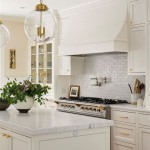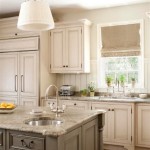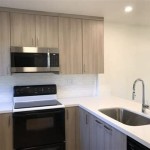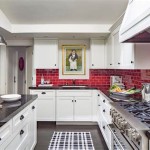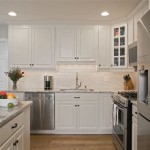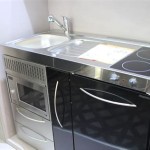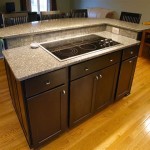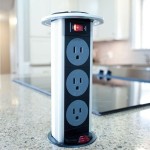Kitchen Cabinets Elk Grove IL: A Comprehensive Guide
Elk Grove Village, Illinois, a vibrant community known for its business park and residential appeal, necessitates a range of services to cater to its diverse population. Kitchen remodeling, in particular, stands out as a prevalent home improvement project. At the heart of any kitchen remodel lies the selection and installation of appropriate kitchen cabinets. This article serves as a comprehensive guide to understanding the options, considerations, and processes involved in acquiring kitchen cabinets in Elk Grove Village, IL.
The importance of kitchen cabinets cannot be overstated. They are not merely storage solutions but integral components that define the kitchen's aesthetic and functionality. Well-chosen cabinets can dramatically enhance the kitchen's overall appearance, improve its organization, and increase the property's value. Understanding the different types of cabinets, materials, styles, and installation procedures is crucial for homeowners embarking on a kitchen renovation project.
Understanding the Types of Kitchen Cabinets
Kitchen cabinets are generally categorized into three main types: stock, semi-custom, and custom. Each type offers a different balance of price, customization options, and lead time.
Stock Cabinets: These are pre-manufactured cabinets available in standard sizes and styles. They are the most affordable option and offer the quickest turnaround time. Stock cabinets are generally found at large home improvement retailers and are suitable for budget-conscious homeowners who do not require extensive customization. While the selection of finishes and door styles may be limited, stock cabinets provide a readily available and cost-effective solution for basic kitchen storage needs.
Semi-Custom Cabinets: These cabinets offer a degree of customization beyond stock options. While they are still based on standard sizes, semi-custom cabinets allow for modifications such as adjusting depth, width, and height within a specified range. They also offer a wider selection of finishes, door styles, and hardware. Semi-custom cabinets represent a middle ground between cost and personalization, making them a popular choice for homeowners who desire more design flexibility without the expense of fully custom cabinets.
Custom Cabinets: These are built to order based on the homeowner's specific design and size requirements. Custom cabinets offer the highest level of personalization, allowing for unique configurations, unusual dimensions, and specific design details. They are the most expensive option and require a longer lead time due to the individualized manufacturing process. Custom cabinets are ideal for homeowners with unique spatial constraints, specific aesthetic preferences, or a desire for truly one-of-a-kind kitchen cabinetry.
Material Selection for Kitchen Cabinets
The material used to construct kitchen cabinets significantly impacts their durability, appearance, and cost. Common materials include wood, plywood, particleboard, medium-density fiberboard (MDF), and stainless steel. Each material possesses distinct characteristics that influence its suitability for kitchen cabinetry.
Wood: Solid wood is a classic choice for kitchen cabinets, offering natural beauty and durability. Popular wood species include oak, maple, cherry, and birch. Each wood species exhibits unique grain patterns and color variations. Solid wood cabinets are known for their longevity and can be refinished to update their appearance over time. However, solid wood is susceptible to expansion and contraction with changes in humidity, which can lead to warping or cracking if not properly sealed and maintained.
Plywood: Plywood is an engineered wood product made by layering thin sheets of wood veneer and bonding them together with adhesive. It is more stable than solid wood and less prone to warping or cracking. Plywood is often used for cabinet boxes due to its strength and stability. High-quality plywood can provide excellent durability and resistance to moisture, making it a suitable choice for kitchen cabinets.
Particleboard: Particleboard is an engineered wood product made from wood chips and resin. It is a more affordable option than solid wood or plywood but is less durable and more susceptible to moisture damage. Particleboard is often used for cabinet boxes in lower-priced cabinets. It is important to ensure that particleboard cabinets are properly sealed to prevent moisture absorption and swelling.
Medium-Density Fiberboard (MDF): MDF is an engineered wood product made from wood fibers and resin. It is denser and smoother than particleboard, making it a good choice for painted cabinet doors and drawer fronts. MDF is less prone to warping than solid wood and provides a uniform surface for painting. However, MDF is also susceptible to moisture damage and should be properly sealed.
Stainless Steel: Stainless steel cabinets are often found in commercial kitchens due to their durability, hygiene, and resistance to corrosion. They are also gaining popularity in modern residential kitchens. Stainless steel cabinets are easy to clean and maintain and offer a sleek, contemporary aesthetic. However, they can be more expensive than other materials and may show fingerprints and smudges.
Considerations for Kitchen Cabinet Styles and Finishes
The style and finish of kitchen cabinets contribute significantly to the overall aesthetic of the kitchen. Numerous styles and finishes are available, ranging from traditional to contemporary, allowing homeowners to create a kitchen that reflects their personal taste.
Traditional Styles: Traditional kitchen cabinet styles often feature raised panel doors, ornate moldings, and decorative hardware. They typically incorporate warm wood tones and classic designs. Examples of traditional styles include Shaker, raised panel, and Victorian.
Contemporary Styles: Contemporary kitchen cabinet styles are characterized by clean lines, minimalist designs, and sleek finishes. They often feature flat panel doors, frameless construction, and modern hardware. Contemporary styles tend to incorporate neutral colors, such as white, gray, and black.
Transitional Styles: Transitional kitchen cabinet styles blend elements of both traditional and contemporary designs. They offer a balance between classic and modern aesthetics. Transitional styles often feature simple door styles, neutral colors, and a mix of textures.
Cabinet Finishes: Numerous cabinet finishes are available, including paint, stain, and laminate. Paint provides a solid color finish and can be customized to match any décor. Stain enhances the natural grain of the wood and provides a warm, rich look. Laminate is a durable and affordable finish that is available in a wide range of colors and patterns.
Hardware, such as knobs and pulls, also plays a crucial role in the overall style of kitchen cabinets. The selection of hardware should complement the cabinet style and finish. Consider factors such as material, shape, and finish when choosing hardware.
Lighting is another important consideration. Under-cabinet lighting can enhance the functionality and ambiance of the kitchen. Recessed lighting, pendant lights, and track lighting can also be used to illuminate the cabinets and countertops.
The selection of countertops should also complement the cabinets. Common countertop materials include granite, quartz, marble, and laminate. The color, pattern, and texture of the countertops should coordinate with the cabinets to create a cohesive design.
Backsplashes provide an opportunity to add visual interest and protect the walls from splashes and spills. Common backsplash materials include tile, glass, and stone. The backsplash should complement the cabinets and countertops in terms of color, pattern, and texture.
Flooring is another important consideration. Common flooring materials include tile, hardwood, and laminate. The flooring should be durable, easy to clean, and coordinate with the cabinets and countertops.
Appliances should also be considered when designing a kitchen. The size, style, and finish of the appliances should complement the cabinets and countertops. Integrated appliances can create a seamless look.
Navigating the Kitchen Cabinet Purchase and Installation Process in Elk Grove Village
Purchasing and installing kitchen cabinets involves several steps, from initial planning and design to final installation and inspection. Understanding the process can help homeowners make informed decisions and ensure a successful kitchen remodel.
Planning and Design: The first step is to plan the kitchen layout and design the cabinet configuration. This involves measuring the kitchen space, identifying workflow patterns, and determining storage needs. It is often beneficial to consult with a kitchen designer to create a functional and aesthetically pleasing design.
Choosing a Cabinet Supplier: Once the design is finalized, the next step is to choose a cabinet supplier. Several options are available in Elk Grove Village, including large home improvement retailers, local cabinet shops, and online retailers. Each option offers different advantages and disadvantages in terms of price, selection, and service.
Obtaining Quotes: It is important to obtain quotes from multiple cabinet suppliers to compare prices and services. Be sure to provide each supplier with the same design specifications to ensure an accurate comparison. Review the quotes carefully to understand what is included, such as delivery, installation, and warranty.
Ordering Cabinets: Once a cabinet supplier is selected, the next step is to place the order. Review the order carefully to ensure that all specifications are correct. Confirm the delivery date and any special requirements, such as access restrictions.
Preparing the Kitchen: Before the cabinets are delivered, the kitchen must be prepared for installation. This may involve removing existing cabinets, appliances, and countertops. Ensure that the kitchen is clean and clear of debris.
Installing Cabinets: Cabinet installation can be a complex process that requires specialized tools and skills. It is often best to hire a professional installer to ensure that the cabinets are installed correctly and securely. A professional installer will have the experience and expertise to handle any challenges that may arise during the installation process.
Final Inspection: After the cabinets are installed, conduct a final inspection to ensure that everything is done to satisfaction. Check for any defects, misalignment, or other issues. Address any concerns with the installer promptly.
Maintaining Kitchen Cabinets: Proper maintenance is essential to prolong the life of kitchen cabinets. Clean the cabinets regularly with a mild soap and water solution. Avoid using harsh chemicals or abrasive cleaners. Repair any damage promptly to prevent further deterioration. Periodically check the hardware and tighten any loose screws.
.jpg?strip=all)
Kitchen Cabinets Elk Grove Village Il 60009

Glass Kitchen Cabinets In Elk Grove Village Il

Woodface Kitchens Updated July 2025 19 Photos 2500 Touhy Ave Elk Grove Village Illinois Interior Design Phone Number Yelp

About Us And Our Custom Cabinets Design Dremax
.jpg?strip=all)
Kitchen Cabinets Elk Grove Village Il 60009

Cabinets Granite Direct Elk Grove Village Updated July 2025 16 Photos 2500 Touhy Ave Illinois Kitchen Bath Phone Number Yelp

Glossy White Kitchen In Elk Grove Village Remodeling Bathroom Fusion Home

Glass Kitchen Cabinets In Elk Grove Village Il

En Pointe Cabinetry Updated July 2025 950 E Thorndale Ave Elk Grove Village Illinois Kitchen Bath Phone Number Yelp
.jpg?strip=all)
Kitchen Cabinets Elk Grove Village Il 60009

